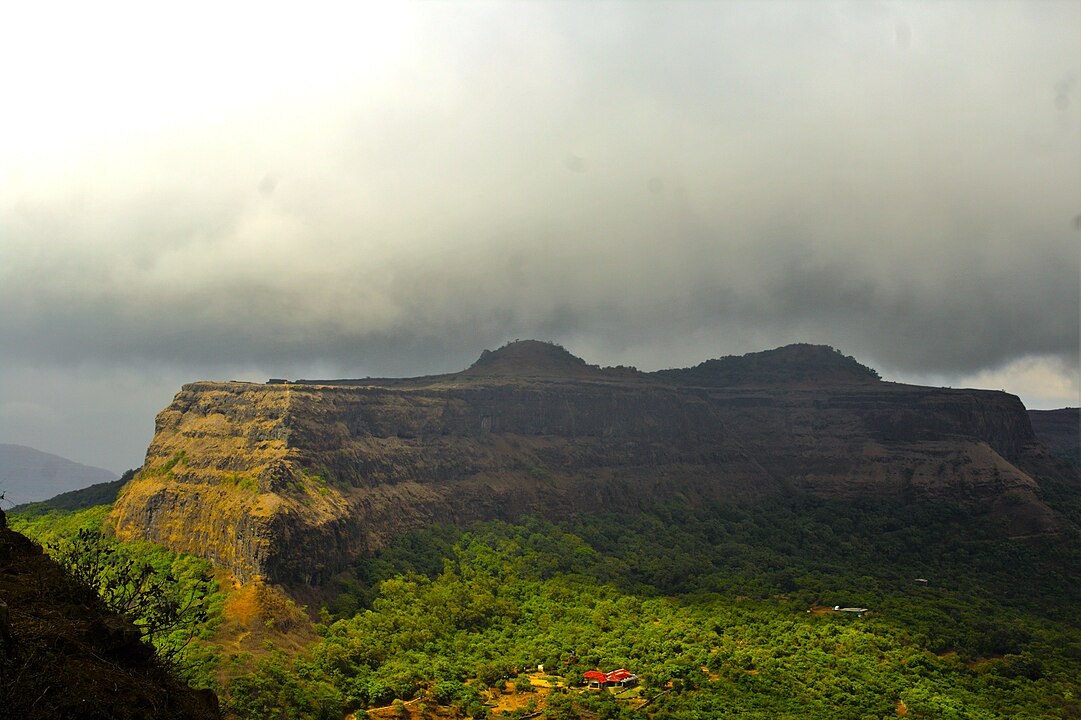Nestled in the embrace of the Sahyadri mountain range in Maharashtra, Visapur Fort stands as a silent sentinel to history, adventure, and panoramic vistas. Located near its famous counterpart, Lohagad Fort, Visapur offers a trekking experience steeped in history and surrounded by nature’s beauty.
History of Visapur Fort:
Visapur Fort’s history dates back to the 18th century when it was built during the Maratha Empire. Its construction is attributed to the first Peshwa of the Maratha Kingdom, Balaji Vishwanath. This fort played a crucial role in the region’s defense and was later captured by the British during the early 19th century. The fort’s history is a narrative of shifting powers, echoing the times of Maratha valor and colonial rule.
Architecture and Structure:
Visapur Fort’s architectural grandeur reflects the military engineering of its time. Its massive stone walls, watchtowers, and robust bastions stand as a testament to its defensive strength. A unique feature of the fort is the stone-built Hanuman Temple, an architectural marvel in its own right. The temple’s intricacies and the spacious plateau provide the perfect setting for trekkers and history enthusiasts alike. From this plateau, one can enjoy breathtaking views of the surrounding landscapes, including Lohagad Fort, Pawna Dam, and the lush greenery of the Sahyadri hills.
Significance and Cultural Importance:
Visapur Fort is not just a historical site; it’s a symbol of adventure and exploration. It beckons trekkers, adventure seekers, and history enthusiasts from near and far. As you ascend its slopes and explore its bastions, you are enveloped by the silence of history and the serenity of nature. For trekkers, Visapur provides a challenging yet rewarding experience. It’s an opportunity to conquer heights while traversing through dense forests and rocky terrain, forging unforgettable memories.
Visitor Information:
Accessing Visapur Fort involves a thrilling trek that immerses you in the beauty of nature. The fort is open year-round, and there’s no entry fee. The trek to Visapur is an immersive journey into the Sahyadri’s natural beauty. While the trek can be demanding, the vistas and historical significance make every step worthwhile.
Best Time to Visit:
The ideal time to explore Visapur Fort is during the post-monsoon season (October to March) when the weather is pleasantly cool, and the surroundings are adorned with lush greenery. This period offers the best trekking conditions and allows you to fully appreciate the beauty of the Sahyadri hills.
Nearby Attractions:
The vicinity of Visapur Fort includes a wealth of attractions for those interested in further exploration. Bhaja Caves and Karla Caves, ancient rock-cut cave complexes, offer a glimpse into the region’s rich cultural history. Lohagad Fort, Visapur’s famous neighbor, is another captivating destination for history buffs. The nearby hill station of Lonavala is an excellent base for travelers looking to explore the Sahyadri region further. With its waterfalls, viewpoints, and pleasant climate, Lonavala provides a perfect complement to your Visapur Fort adventure.
Conclusion:
Visapur Fort invites you to tread in the footsteps of history, embrace the thrill of adventure, and soak in the splendor of the Sahyadri mountains. It’s more than just a fort; it’s an opportunity to connect with the past, witness nature’s grandeur, and create enduring memories. As you stand atop its plateau, gazing at the horizon, you’re reminded that Visapur Fort is not merely a destination; it’s an experience, a journey through time and nature’s serenity.
Featured Image – https://en.wikipedia.org/
